If you ask anyone what is the most exciting trend in technology this year, their answer will probably be one of two things: Virtual Reality and Augmented Reality.
In a set of developments that have brought science fiction into the pockets of consumers everywhere, VR and AR are taking over mobile interactions by joining the digital world to the real world. With the latest launch of popular AR game Pokemon Go, everyone is buzzing about technologies that aren’t, in fact, all that new.
And everywhere, professionals are asking themselves: “How can we make this craze work for us?”
The Present and Future of Virtual Reality and Augmented Reality
We found a great infographic with all the details for what virtual reality and augmented reality means for E-commerce by Maven E-Commerce:
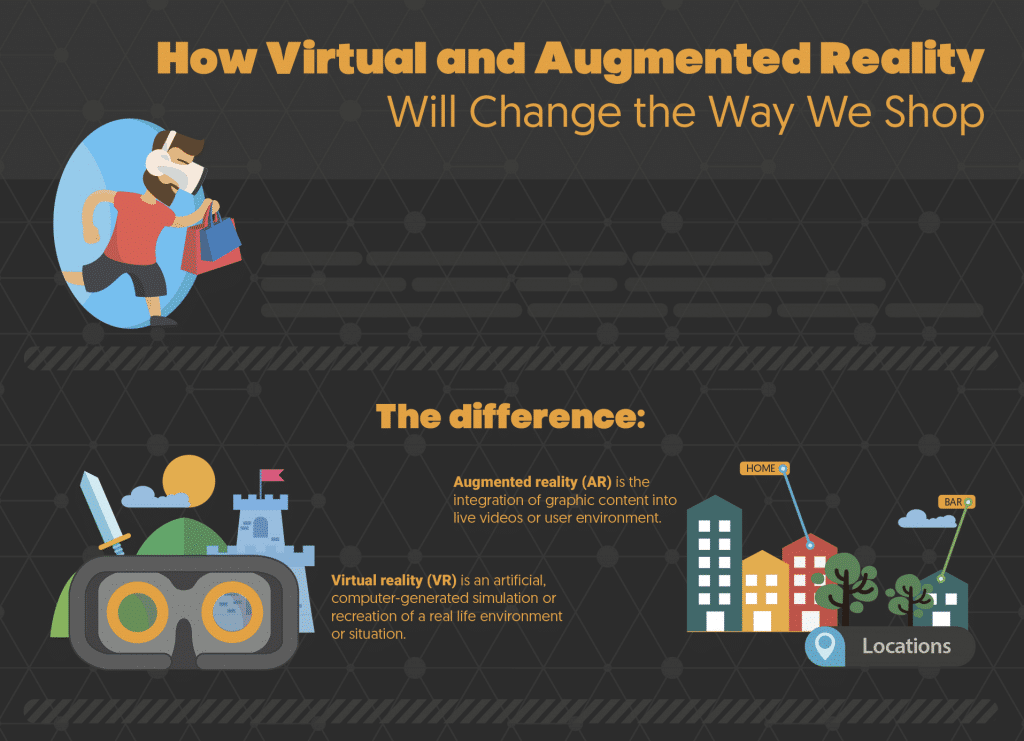
It’s important, first of all, to know the difference between virtual reality and augmented reality. Virtual reality (VR) is a completely digital world where the user is immersed and can interact with his or her simulated environment. Augmented reality (AR), however, is when graphic content is superimposed on the actual environment of the user, usually via a mobile device.
Mobile VR devices have already hit the market (even super cheap mass-market ones like Google Cardboard). Companies have wasted no time getting in on virtual reality for gaming consoles, launching Oculus Rift just a few months ago, and HTC Vive and Playstation VR not too long after.
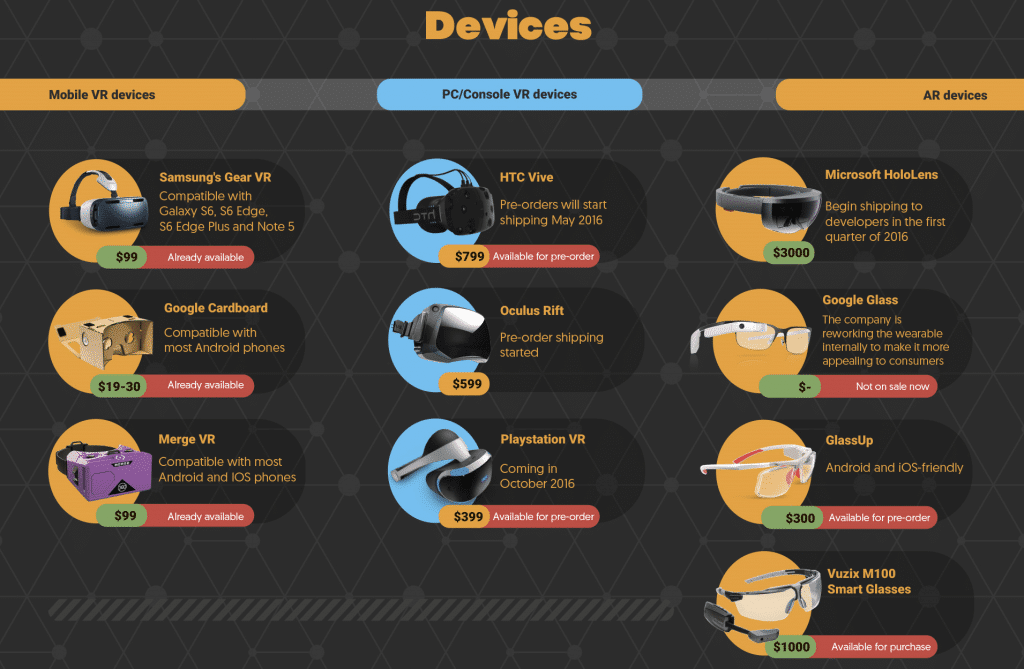
Augmented reality devices have been a bit more complicated at launch- though it’s been practically implemented for longer than virtual reality has. Google glass lead the way in terms of AR (though it’s not currently on sale) followed by competitors launching their versions of the augmented reality glasses. Typically, however, augmented reality has been implemented via mobile phones and tablets.
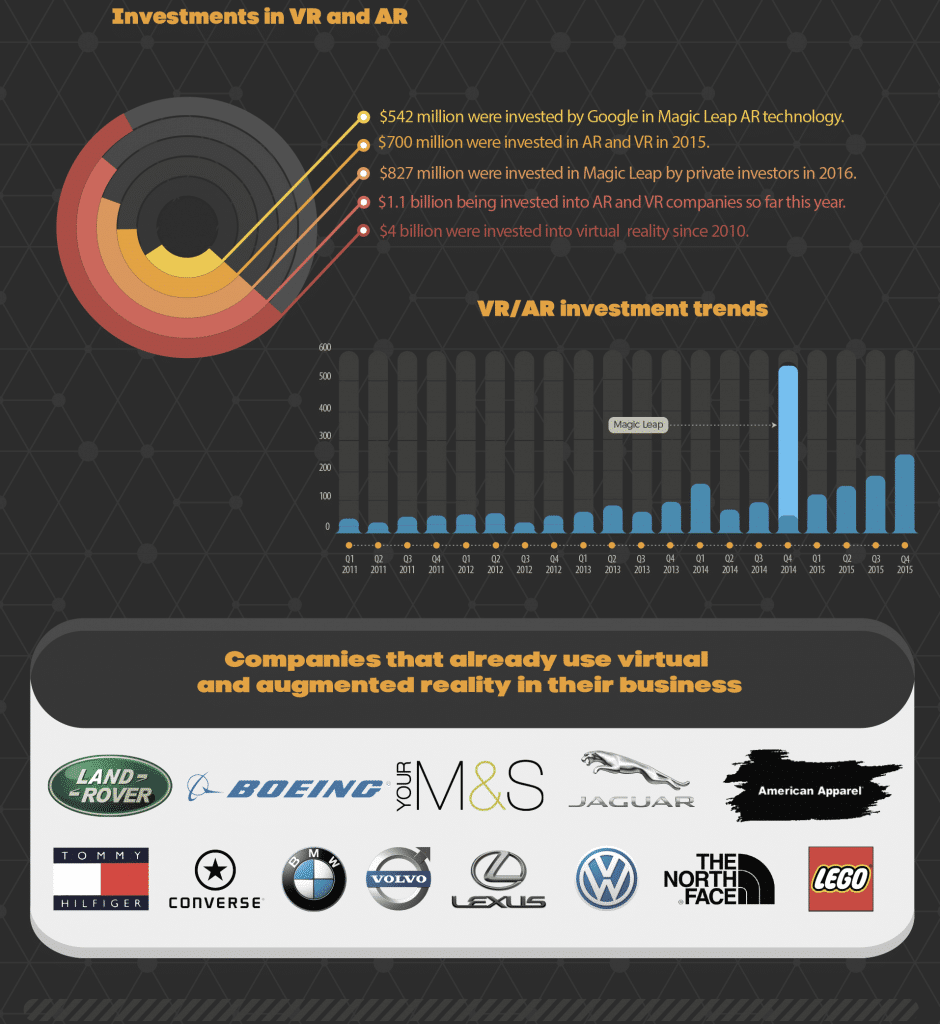
This industry has caught the eye of many companies looking to invest in this fast-growing trend with over $4 billion invested in virtual reality since 2010. In 2015 alone, companies invested $700 million in virtual reality and augmented reality.
With a boom of investment of that amount, it’s time to start getting it implemented for your E-Commerce. It’s going to be an industry changing development, and those who get in on it first will be the ones to profit the most from this trend.
What do Virtual Reality and Augmented Reality mean for E-Commerce?
With the rise of these technologies, the possibilities and implementations are endless. Several brands have been experimenting for quite some time with virtual reality and augmented reality. Leading Swedish Furniture retailer, IKEA, launched an augmented reality app allowing you to see how furniture would look in your home.
Alternatively, other apps are allowing customers to see more information about a product by looking at it through their smartphone.
Customers are the ones the most excited about virtual reality and augmented reality. Of those who tried VR, nearly 80% said they wanted to try it again, and even more said they would recommend it to friends. Most customers have already thought of the implications of virtual reality in shopping- wanting to see items in real size and form when shopping online.
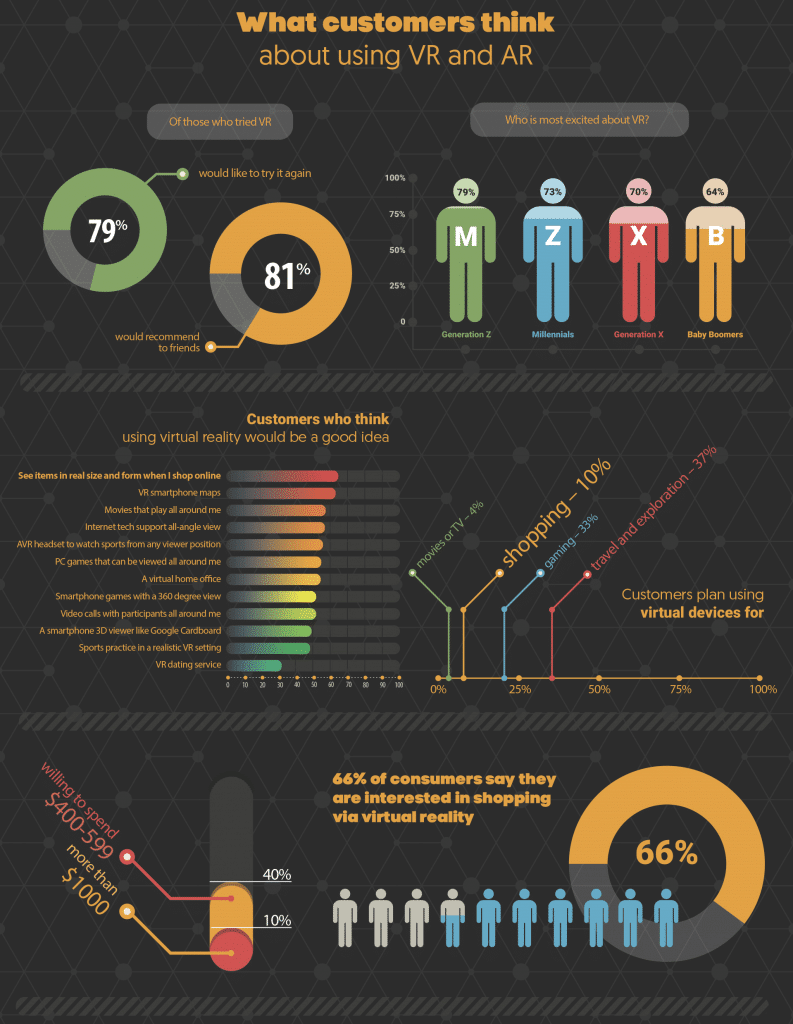
66% of those who had tried virtual reality said they were interested in using it for shopping, and 40% were willing to pay up to $599 dollars for a VR device. 35% of users said that they would be more open to shopping online with VR as it would give them a more realistic feel of the product.
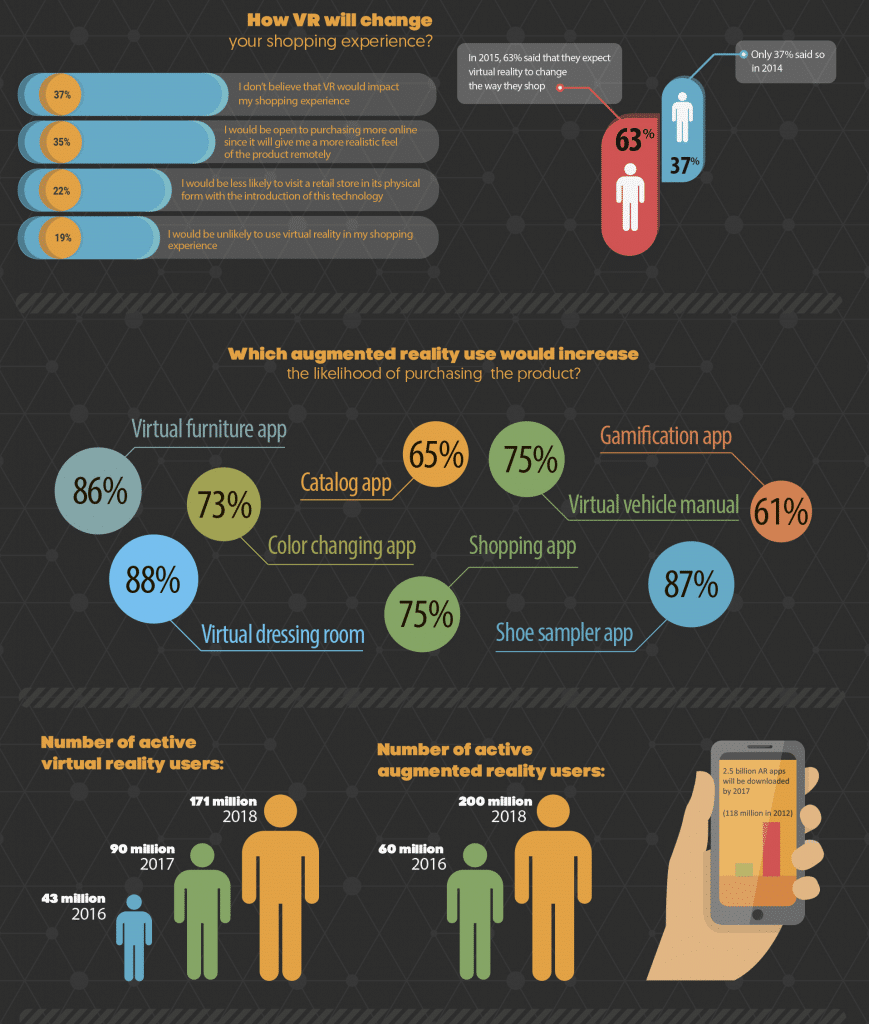
In most domains, customers were positive about purchasing online with the help of augmented reality. Augmented reality is just as exciting for shoppers, with 86% of shoppers stating that they would be more likely to purchase online with a virtual furniture app, like IKEA’s.
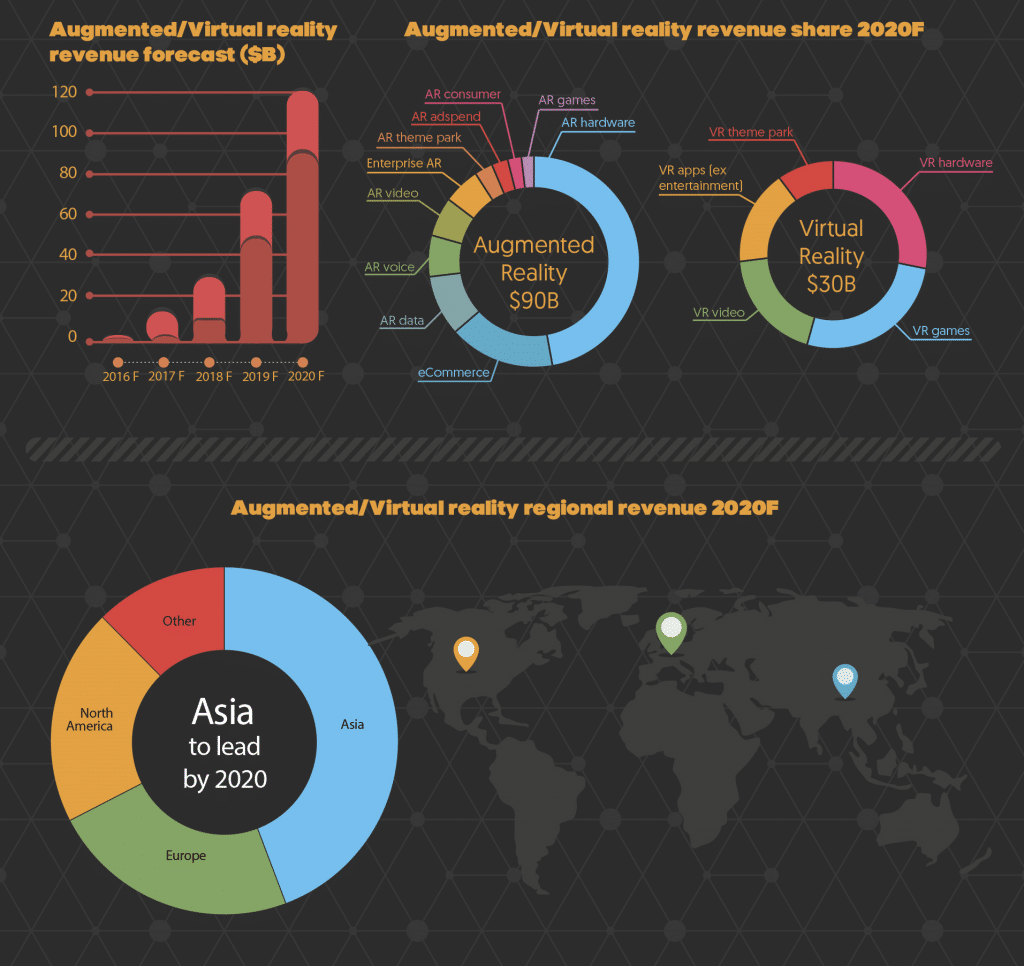
How big is this craze going to get? We’re already projecting 371 million VR & AR users by 2018. Virtual reality and augmented reality revenue is forecast at 120 billion by 2020, and AR set to explode to 75% of that revenue with Asia leading the way.
What can we do with VR & AR?
Imagine a world where a customer uses an augmented reality app to search for a new toaster. After, they look through their app to see which stores with the toaster are closest to them (with directions on how to get there).
Otherwise, imagine wanting to shop in the comfort of your own home and using your VR device to browse the current stock of your favorite store. Imagine being able to pick up and see the products in their actual size.
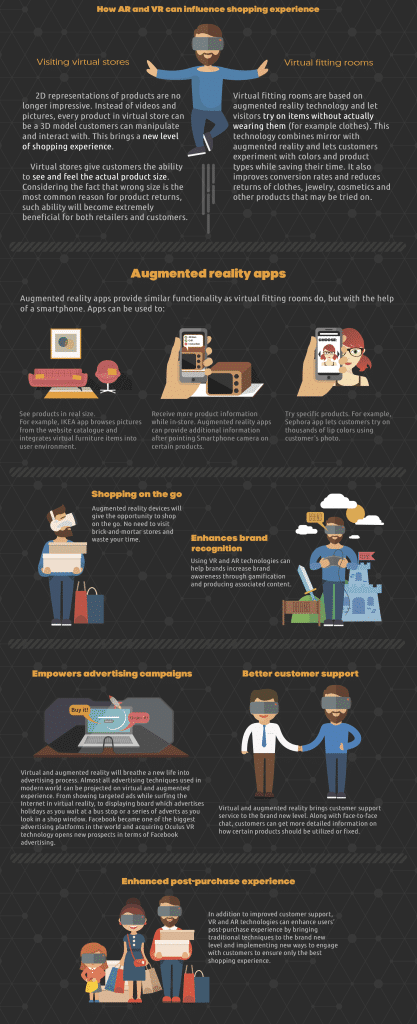
A few more practical uses for implementing virtual reality and augmented reality:
- VR customer service and troubleshooting
- The in-store experience at your customer’s home using VR devices
- Enhanced brand recognition and engagement with VR developed games
- AR in-home product testing (like with IKEA)
- AR fitting rooms (clothes, shoes, makeup)
- AR GPS tracking to pull customers in-store
This could be a catalyst of customer service as well- imagine being able to get a hands on VR tutorial with a customer service representative who walks you through how to fix or operate your product. Imagine a world where a customer can look at a product in your brick-and-mortar with their mobile device and get a call-to-action with free shipping if they purchase directly via the app.
These examples are only the tip of the iceberg when it comes to virtual reality and augmented reality. Regardless of how E-Commerce professionals decide to implement these trending technologies, one thing is for sure: users want more. Those who are able to give the customer a unique and engaging experience will be the real winners come 2020. This is definitely one trend to keep your eye on for the next few years.
Which are you more excited about? Tell us below or tweet us!





